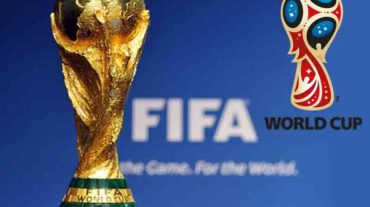MotoGP ™ is the World Motorcycling Championship, with a season comprising 20 Grand Prix held in 16 countries across four continents and with global television coverage. The world's most talented drivers are measured on the track using the most advanced technology from the six manufacturers; Aprilia, KTM, Ducati, Honda, Suzuki and Yamaha.
Organized by the International Motorcycle Federation (FIM) in 1949, MotoGP ™ enters its 71st edition this year. It is the oldest motoring world championship currently held. Previously called '500cc', the MotoGP ™ started a new era in 2002, when the modification of its regulations allowed the participation of motorcycles with 4-stroke and 990cc engines. In the 2007 season, the motorcycles went from using engines with a capacity of 800cc and from 2012 the engines once again had a maximum capacity of 1000cc. MotoGP ™ has been managed since 1992 by Dorna Sports, the company that owns its commercial rights, under the supervision of the FIM.
MotoGP ™ has a rich past, with Grand Prix held in all parts of the globe during the previous 70 editions. More than 2.4 million people walked through the gates of the circuits to see the action live. Italy, Great Britain, Spain, the United States and Australia are some of the countries with the highest number of victories and titles. To see it in detail, you can consult the section results and statistics.
In addition to the premier class, there are two other categories that are part of the 'MotoGP ™' World Championship. Moto3 ™ (the old 125cc class) and Moto2 ™ (ex 250cc) are independent championships that celebrate their races at each Grand Prix, with three new world champions crowned at the end of each season.
The Autodromo de Termas de Rio Hondo was the dream of visionaries who after a long time of work, with significant investments and a carefully studied growth plan, carried out the works that ended up showing that dreams can be achieved and goals be fulfilled no matter how far away they seem.
In principle, the idea of generating a tourist center in the City of Termas de Rio Hondo, was in the plans of the government headed at that time, by Dr. Gerardo Zamora, his affinity with the sport of the iron, promoted the project of an Autodromo for the province, but next to him was who today is the director, the former Carretera Tourism pilot Héctor “Toti” Farina, who after many years of struggle saw that his dream was getting closer and closer, so they got to work , with the firm objective of having a circuit that could host the best national categories, thus adding a new proposal for tourists, who visited the spa city year after year. WHEN SPORT IS A STATE POLICY
But once the fundamental and historical step has been completed, to finish the first section of works, and inaugurate it with a date of Road Tourism, on that remembered weekend of May 10 and 11, 2008, with the presence of national and provincial authorities , the first step was taken towards what would come later, with a track that was a mirror for others that were built later, Termas de Rio Hondo was shown to the country, when the checkered flag fell for the first time, decreeing the winner of that first race Buenos Aires driver Emanuel Moriatis with a Ford Falcon, who after 25 laps on the first track, which was 4,275 meters, completed it in a net time of 39m 57s 375/1000. That first layout of the circuit showed interesting technical data, a unique track width in Argentina with 16 meters,
But all this was, although it did not seem, the beginning of something much bigger, it did not take many years until the possibility arose, that the most important two-wheel category in the world, could return to our country after 14 years of absence , the first steps were taken and the Dorna Sport managers arrived to inspect the circuit and its facilities. The possibility was achieved and after the inspection, he got down to work to modify almost everything that was done, a new circuit drawing, state-of-the-art infrastructure and a new asphalt layer with special polymers, a modern perimeter irrigation system close to the runway, modern runway drainage to avoid puddles, communication systems and advanced technology through fiber optics, race control room with monitors and cameras throughout the circuit, everything that was needed for the International Automobile Federation (FIA) and the International Motorcycling Federation (FIM) to request for the homologation of the same, which allowed the arrival of the top International categories. At the end of this second section of works, the circuit was totally new and different, accompanied by structures that allowed to see a new building and that envisioned more growth and modernization, in terms of the radical change it presented, what was interesting was the new design of the circuit , which arose from the hands of the Italian designer, the Engineer Jarno Zaffelli, among all the works also stood an imposing building for boxes, with all the comforts and technology available to the teams and drivers, With capacity for seventy vehicles, the other important novelty was shortly before the end of 2012, the inauguration within the Autodromo itself, of the Automobile Museum that houses historical pieces of motor sport. Among the most impressive details of the new circuit, was the extension of the same that happened to be 4.805 meters, a new variant after turn 1, which presented a camber or inclination towards the inner part of the circuit including the transit through two new curves , the opposite straight was shortened by almost 300 meters, now having 1,070 meters, the width was maintained at 16 meters, but in its total route it would have 5 more curves than the previous one, counting 9 variants to the right and 5 to the left, also a climbing sector that forces a curve and against a smooth curve and ends in a blind curve




